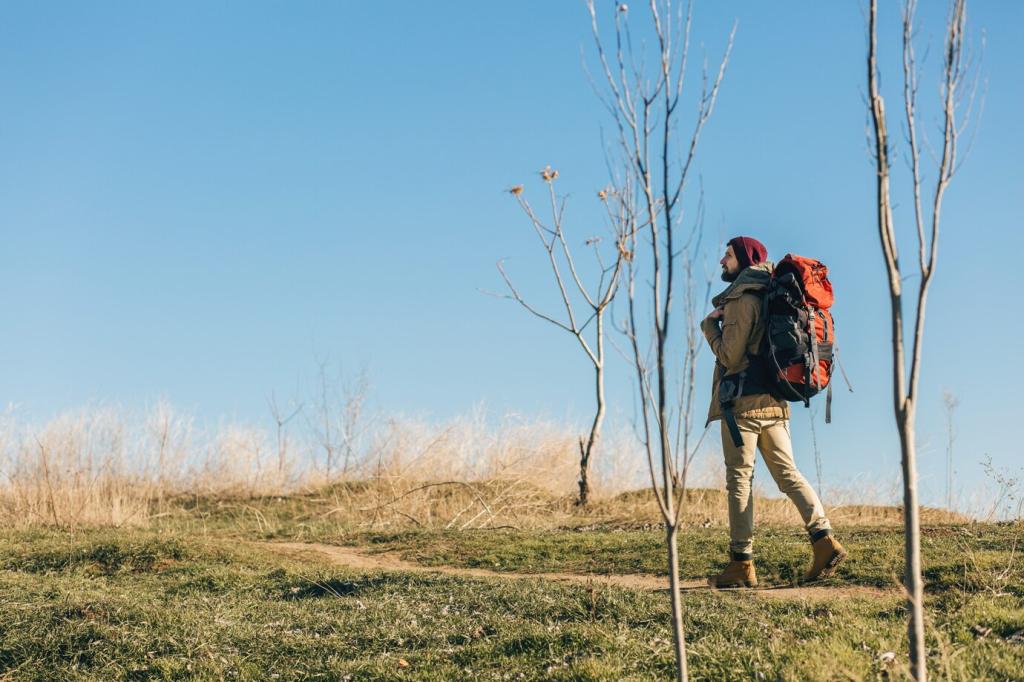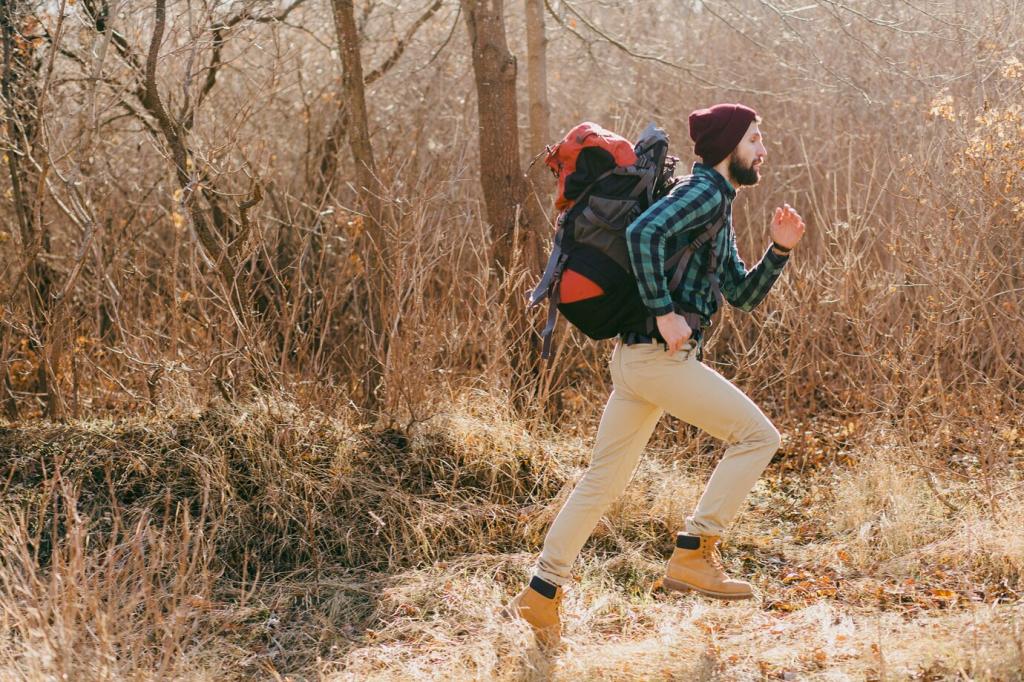Layering and Footwear for Freeze–Thaw Trails
Combine a wicking base, breathable mid-layer, and a light shell to handle wind and melt. Pack a compact synthetic puffy for snack breaks. Spring rewards quick adjustments—practice stopping briefly to add or shed layers without losing trail rhythm or warmth.
Layering and Footwear for Freeze–Thaw Trails
Waterproof boots, ankle gaiters, and microspikes tackle icy mornings and slushy afternoons. Trekking poles add balance when snow softens. If trails are mixed dirt and ice, store spikes in an accessible pocket so transitions are quick, safe, and frustration-free.
Layering and Footwear for Freeze–Thaw Trails
Carry a spare pair of socks, plus a small camp towel to wring out liners after creek splashes. Foot balm prevents hot spots when socks get damp. Share your favorite blister-prevention tips and help fellow hikers finish with happy, warm feet.








